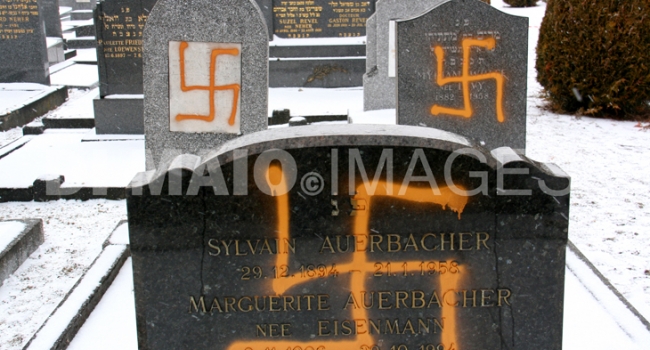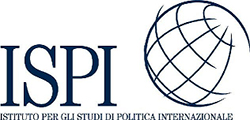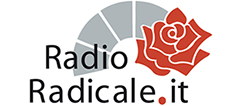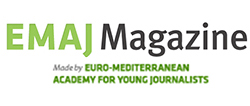REPORTAGE: Strasbourg, anti-Semitism during HaShoah

Right on the very day that the world had highlighted to remember all the victims of the Fascism and Nazis regimes, right on the very day that European institutions were commemorating the 65th anniversary of the Auschwitz liberation, around twenty Jewish tombstones situated in a cemetery in the North-West of Strasbourg were desecrated by a group of vandals. In a city that hosts the most European institutions and in a country with the highest number of Jewish and Muslims in all of Europe, it’s a serious act of intolerance in a series of anti-Semitic actions.
Strasbourg, France - It was back on the first of November 2005 during the 42nd plenary session of the United Nations General Assembly when the Resolution 60/7 was approved making January 27 the International Holocaust Remembrance Day or, in Hebrew, Yom HaShoah. On January 27 1945, the Soviet Red Army liberated the infamous concentration-extermination camp, Auschwitz. While in Israel the memorial day corresponds with the anniversary of the Warsaw’s ghetto revolt, for the United Nations the day of the liberation of the most terrible Nazi camp was the right date to remind the world about the Shoah; the annihilation of 6 million of European Jews.
The UN resolution doesn’t obligate the States to commemorate; it simply involves each State to establish the International Holocaust Remembrance Day with a national law or to respect it de facto, because as the new president of the Parliament Assembly of the Council of Europe, Mr. Mevlüt Çavuşoğlu, said during the official commemoration in Strasbourg, “remembering is the best way to prevent a repeat of the tragedy of the Holocaust”.
Primo Levi was an Italian Jewish survivor from Auschwitz and died in 1978. In one of his books he wrote: “If it’s impossible to understand, know it is necessary because all of those who will forget their past are condemned to live it again”.
Meeting the Israeli Ambassador
“Unfortunately - says Simona Frankel, Israeli Ambassador to the General Consulate in Marseille, during the Official Commemoration at the Council of Europe - those who do not want to believe, commemorate or remember the tragic event are still a lot and there is a country (Iran) whom is also preparing a new Holocaust that will not hurt Jewish people only but also the rest of the world”.
I quote the words that the Secretary General of the Council of Europe, Mr. Thorbjørn Jagland, used during the commemoration - “Europe has become a place where people can build their lives instead of lose their lives” - when I ask Ms. Frankel if anti-Semitism still exists in Europe, she says: “Of course and we could write a book about it. But - she adds - we must weigh the words: anti-Semitism exists in Europe but Europe is not anti-Semite”.
“Do you think that the critics to the Israeli government on the Israeli-Palestinian conflict are increasing anti-Semitism? Do these critics use anti-Semite behaviour?”, I ask having in mind the numerous campaigns against Israeli products and the fact that David’s star was burned during many protests.
“No - she replies - political critics are critics, anti-Semitism is anti-Semitism and in Europe it has old radices” maybe based on ignorance and intolerance since that every kind of minority - Jewish, Muslims, immigrants, black, Asian, gays - are still discriminated in every European country, even in the most developed States like France, Germany and Italy.
While the European institutions and the Jewish religious authorities were officiating the anniversary in every corner of the continent, the last threat of the Iran supreme leader, Ayatollah Ali Khamenei - “the nations of the Middle-Eastern region will soon see the destruction of the Zionist regime” - faced a new and maybe more shocking anti-Semitic act that happened right in Strasbourg, one of the city symbol of the democratic reborn of Europe: an unknown group of neo-Nazis went to the Jewish Cemetery of Strasbourg, desecrating about 20 tombstones with swastikas and anti-Semitic slogans.
Silence around Cronenbourg
The Jewish cemetery is situated in the North-Western side of the city, in the suburb of Cronenbourg, famous for the production of the French-German beer ‘Kronenberg’. When I arrive around noon, the sky is grey and the wind shakes the bare trees.
I ask a policeman how to get to the cemetery. He is standing in front of the police station in Rue d'Engenthal. “Walk next to the Christian cemetery until you find the Rotonde Tram Station. Then turn right and after a few metres you will see what you are looking for. The station - he concluded saying - divides the two cemeteries”.
“Do anti-Semitic acts happen often in Alsace?”, I ask. He looked to his left to find the eyes of his superior and then said: “I am not allowed to talk about the ‘Jewish story’, I am sorry”.
Maybe he was really sorry to not be able to answer the question, but while I was looking for the cemetery I got the same answer rom a postman that was distributing mails and should know the area like the back of his hand. “I am sorry - he said - I don’t know where the cemetery is”. I got the same answer even from a 20 year old guy living in Cronenbourg. He wouldn’t even say that the Jewish cemetery was on the other side of the street, ten metres away from us.
When I arrived to the cemetery iron gate, a young private Jewish security guard dressed all in black, wearing a ceremony black kippa on the head, stopped me and asked for my identification card. “If you want to get in you need an authorization”, he said. The cemetery was surrounded by a huge number of policemen and the street in front of it was closed off to traffic.
While waiting for the authorization it started snowing and the ground became white, except for the entrance of the cemetery, where the snow was melting fast because of the many people going into the holy place.
“Anti-Semitism is not common in Strasbourg”, said Clarisse, a young French Jewish girl met at the entrance and with long straight black hair and big brown eyes. “I am a daughter of the Jewish Diaspora and my family – she puts her mobile phone into her pocket - is living here since 1950 and we never had problems”, but the atmosphere doesn’t confirm her words. When I tell her that no one wanted to tell me the location of the Jewish cemetery, she said that “silence is the worst thing ever” and then, smiling, she added: “People here are very quiet, they don’t want to have problems”.
The dates and numbers of the intolerance
France, the first country that gave the Civil rights to the Jewish people in 1791, is now the European country with the highest number of Jews and Muslims and one of the first for the number of violent incidents against minorities. The report of the Coordination Forum for Countering anti-Semitism – an Israeli organization that monitors anti-Semitic activities throughout the world and coordinates the struggle against this phenomenon with various government bodies and Jewish organizations around the world - said that “anti-Semitism is definitely on the rise in France” and recorded 631 anti-Semitic incidents during the first 2009 semester against 474 for the whole of 2008.
On January 11 of this year the Socialist Party Mayor of Strasbourg Roland Ries’s private home was vandalized with Islamophobic and “anti-minaret” slogans. Talking about the controversy minaret banning in Swiss, the mayor said that “there would be no reason to impose a similar minaret ban in Strasbourg”, particularly for one currently under construction with the new great mosque of Strasbourg.
In 2004, 117 tombs were destroyed in the Jewish cemetery of Herrlisheim, a small village situated in the north-east of Strasbourg, just next to the border with Germany. Francis Levy, president of the Israelit Concistory for the Bas-Rhin County, interviewed about what happened in Cronenbourg declared that “after Herrlisheim I thought that people understood how bad is discrimination but now I see that we still have to work a lot to educate people to respect”.
Simone Veil is a 82 years old Holocaust survivor. Deported with her family to Auschwitz-Birkenau concentration camp in March 1944, where her parents and brother perished, Ms. Veil is now a former French cabinet minister. Two years ago, talking about anti-Semitism in France, she said that “even if radical Islamists are behind some violent incidents against Jews in certain French neighbourhoods, Anti-Arab sentiment is much stronger in France than anti-Semitism because France's Jewish community is much more integrated than its 5 to 6 million Muslims”.
“It is not a matter of numbers - said Clarisse while a set of institutional dark cars appear in front of the cemetery escorted by police cars. The rise of anti-Semitism is related to the Israeli-Palestinian conflict and not so much for ‘racial’ reasons. Europe is not afraid anymore by Jews but by Muslim who are always more in the continent”.
The commemoration at the cemetery
France's Interior Minister, Brice Hortefeux steps out of the biggest and darkest car. Dressed in an heavy brown coat, the Minister approached those who were waiting under the snow. Most of them were old Jewish people wearing fur coats and ceremonial kippas. Some of them were smiling and kissing each other, others, with very serious faces and silent, were looking at the residential buildings behind the cemetery.
Apparently it was like as if instead of commemorating the Liberation of Auschwitz and publically denouncing the anti-Semitism act of the day before, they were having ‘normal time’, this may be explained by the words of the young security guy: “My people are used to anti-Semitism since centuries”.
In front of many French politicians and Catholic, Protestant and Muslim representatives, the Great Rabbi of Strasbourg, Mr. René Gutman, prayed in Hebrew and called out a list of all the Nazi concentration camps: “Auschwitz-Birkenau, Treblinka, Sobibor, Dachau, Mauthausen, Bergen-Belsen…”.
His voice was repeating itself in an eco. The atmosphere was mystically sad, it was snowing hard and a slow cold wind was shaking the trees around the memorial plaque with all the names of the Jewish people of Strasbourg killed by Nazis. “Never more, never more”, said the Rabbi in front of about 200 people. “What happened yesterday – he continued – is a free and sinister hatred towards our dead, to ourselves and to humanity”.
When the French Interior Minister spoke, his voice was the only sound in the field. “I will fight with full determination, all individuals or groups which affect the memory, fueling hatred, contempt for our principles and our laws. They should absolutely be punished quickly and with the utmost severity”, he said.
“Juden Raus”, “Jews, get out”
At the end of the commemoration, the mass of people moved to the centre of the cemetery. Their coats, hats and kippas were white because the cold wind coming from north was spreading snow everywhere and umbrellas were not useful. The field, covered by countless neatly placed black and grey headstones, was divided by a red and white police ribbon. The Jewish religious authorities escorted the French minister and the other politicians to the desecrating place.
The German phrase ‘Juden Raus’ (Jews, get out), written with yellow paint on a family tombstone, attracted everybody’s attention. Mr. Hortefeux closed his hands, the priest signed himself with the cross, the Imam and the Rabbi looked to the sky. People were shocked. Some of them were crying, others were walking between the tumbs profanated with swastikas and other anti-Semitic slogans and signs. About 20 tombstones were smeared, two overturned. “This is barbaric, this is barbaric”, was repeated by the Minister photographed next to the tombs.
When the snowfall turned into a storm, people left and the cemetery became spectral, empty, white. An tall, old man with an elegant attitude was the only person left in the field in front of a tomb. Without a hat or an umbrella, he took out a hand from the pocket of his coat and pointed at the tombs of Sylvan and Marguerite Auerbacher - two sisters who survived the Holocaust and recently died in France – he said: “this is the tombstone of my wife’s sisters. Look what they did. They don’t even have respect for the dead”. On the stone there was a huge swastika covering the names and the dates of birth and death of the two sisters.
Reportage published on LaSpecula Magazine, Orange and YouthMedia on February 10, 2010.

















